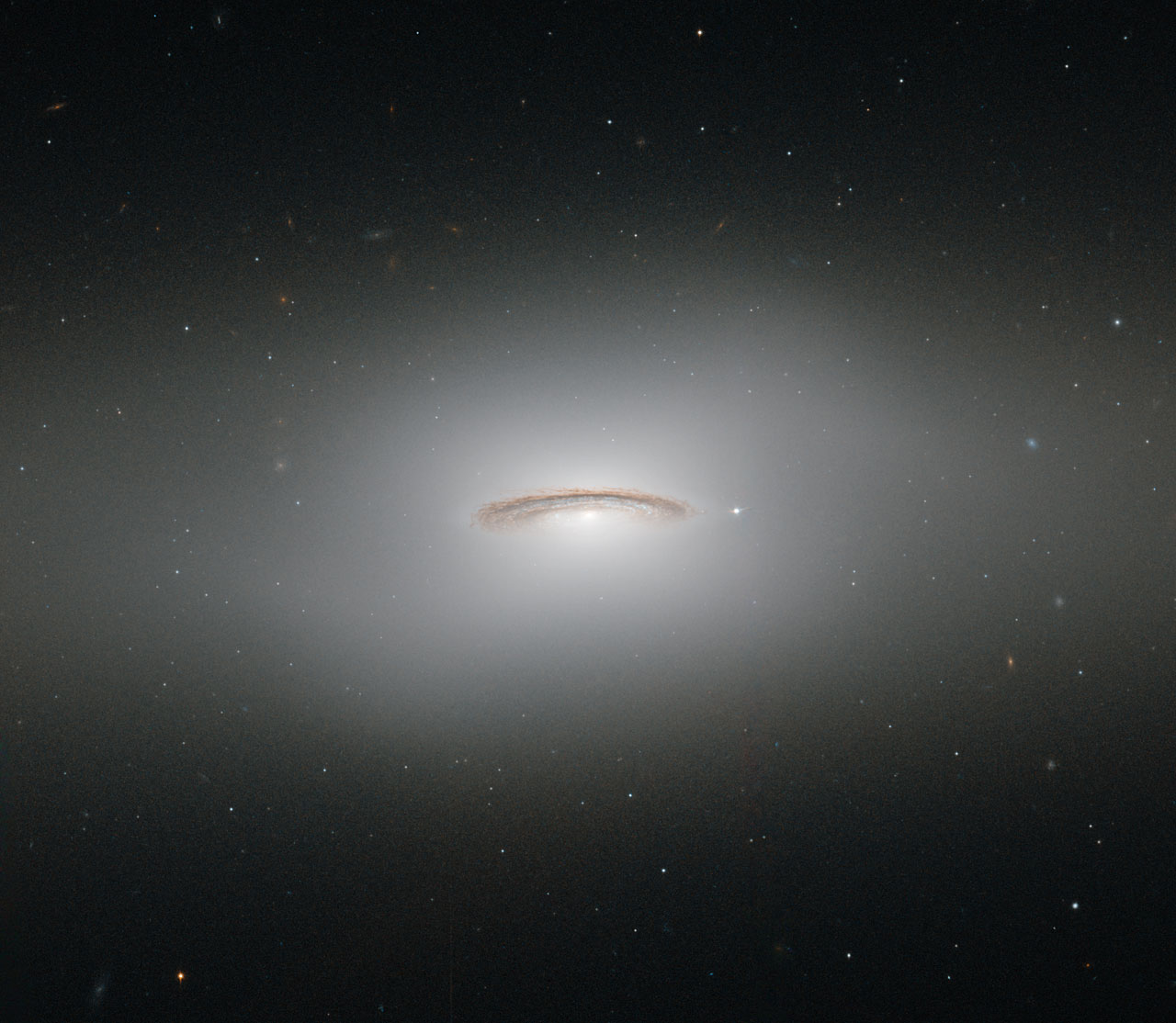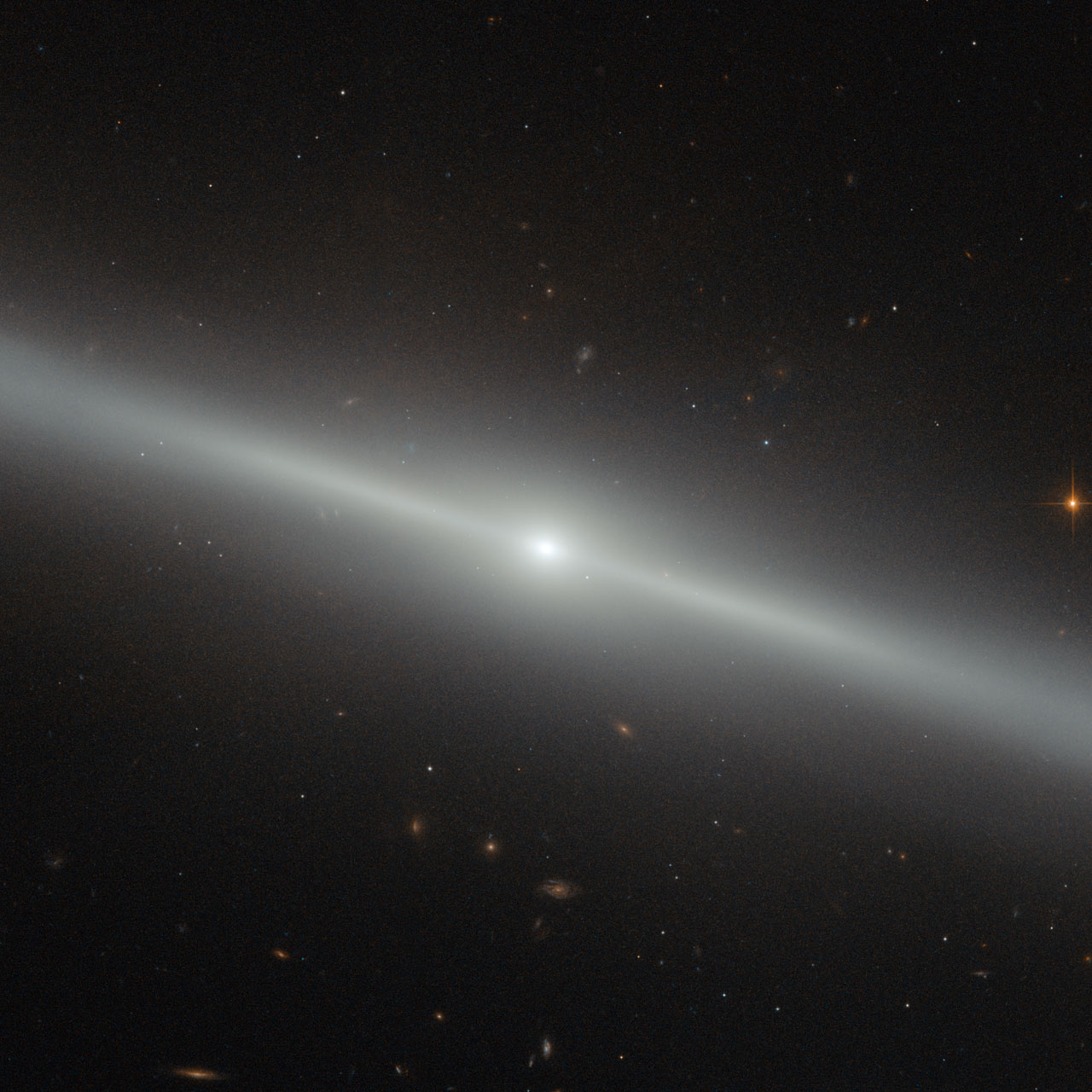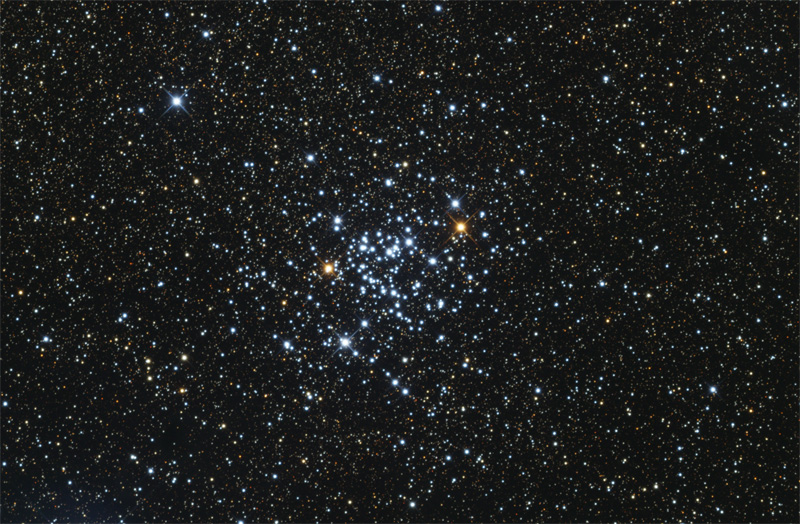Page 2 of 3
Re: Found Images: 2014 October
Posted: Thu Oct 16, 2014 9:36 pm
by Sandgirl
Rosetta selfie
Credits : ESA/Rosetta/Philae/CIVA
Image suggested by Stéphane Le Mouélic
http://asterisk.apod.com/viewtopic.php?t=33971
Re: Found Images: 2014 October
Posted: Fri Oct 17, 2014 6:51 pm
by starsurfer
geckzilla wrote:starsurfer wrote:In my opinion, there are a lot better targets/regions in the LMC that they could have chosen to take an image of.
That was a parallel observation. The telescope can rotate around so that the parallel field can be anywhere in a circle around the primary observation but other than that there isn't much of a choice where the parallel field is aimed at.
I didn't know that, thanks for the extra information!
 You ARE nice!
You ARE nice!
Re: Found Images: 2014 October
Posted: Fri Oct 17, 2014 6:59 pm
by starsurfer
NGC 6188
http://www.astro-pics.com/6188npm.htm
Copyright: Wolfgang Promper
Re: Found Images: 2014 October
Posted: Fri Oct 17, 2014 10:42 pm
by Nitpicker
starsurfer wrote:geckzilla wrote:starsurfer wrote:In my opinion, there are a lot better targets/regions in the LMC that they could have chosen to take an image of.
That was a parallel observation. The telescope can rotate around so that the parallel field can be anywhere in a circle around the primary observation but other than that there isn't much of a choice where the parallel field is aimed at.
I didn't know that, thanks for the extra information!
 You ARE nice!
You ARE nice!
I've only ever imaged the Tarantula Nebula once, with an off-the-shelf, unmodified, unfiltered, RGB colour DSLR (through a telescope). It was produced in my characteristic noisy and distorted style, with only a few minutes of data and 30 second subs. But the nebula looks to be much the same colour blue:
Re: Found Images: 2014 October
Posted: Mon Oct 20, 2014 9:17 am
by starsurfer
Nitpicker wrote:I've only ever imaged the Tarantula Nebula once, with an off-the-shelf, unmodified, unfiltered, RGB colour DSLR (through a telescope). It was produced in my characteristic noisy and distorted style, with only a few minutes of data and 30 second subs. But the nebula looks to be much the same colour blue:
DSO_Dor_N_NGC2070_Tarantula_20140305_2140+10_reduced.jpg
There is actually a lot of blueness to the Tarantula Nebula due to the immense amount of OIII emission. For some reason, many amateurs images reduce the blueness and make it look typically red under the incorrect assumption that because it is an emission nebula, it only contains hydrogen. The LMC (and the SMC to a lesser extent) is full of ionized oxygen!
Re: Found Images: 2014 October
Posted: Mon Oct 20, 2014 9:18 am
by starsurfer
ESA/HEIC: The Whirling Disc of NGC 4526
Posted: Mon Oct 20, 2014 2:23 pm
by bystander
This neat little galaxy is known as
NGC 4526. Its dark lanes of dust and bright diffuse glow make the galaxy appear to hang like a halo in the emptiness of space in this new image from the NASA/ESA Hubble Space Telescope.
Although this image paints a picture of serenity, the galaxy is anything but. It is one of the brightest
lenticular galaxies known, a category that lies somewhere between spirals and ellipticals. It has hosted two known supernova explosions, one in 1969 and another in 1994, and is known to have a colossal supermassive black hole at its centre that has the mass of 450 million Suns.
NGC 4526 is part of the
Virgo cluster of galaxies. Ground-based observations of galaxies in this cluster have revealed that a quarter of these galaxies seem to have rapidly rotating discs of gas at their centres. The most spectacular of these is this galaxy, NGC 4526, whose spinning disc of gas, dust, and stars reaches out uniquely far from its heart, spanning some 7% of the galaxy's entire radius.
This disc is moving incredibly fast, spinning at more than 250 kilometres per second. The dynamics of this quickly whirling region were actually used to infer the mass of NGC 4526’s central black hole — a technique that had not been used before to constrain a galaxy’s central black hole.
This image was taken using Hubble’s Wide Field Planetary Camera 2.
Re: Found Images: 2014 October
Posted: Mon Oct 20, 2014 10:36 pm
by Nitpicker
starsurfer wrote:Nitpicker wrote:I've only ever imaged the Tarantula Nebula once, with an off-the-shelf, unmodified, unfiltered, RGB colour DSLR (through a telescope). It was produced in my characteristic noisy and distorted style, with only a few minutes of data and 30 second subs. But the nebula looks to be much the same colour blue:
DSO_Dor_N_NGC2070_Tarantula_20140305_2140+10_reduced.jpg
There is actually a lot of blueness to the Tarantula Nebula due to the immense amount of OIII emission. For some reason, many amateurs images reduce the blueness and make it look typically red under the incorrect assumption that because it is an emission nebula, it only contains hydrogen. The LMC (and the SMC to a lesser extent) is full of ionized oxygen!
I suppose I'll have to start calling myself
sub-amateur.

Re: Found Images: 2014 October
Posted: Tue Oct 21, 2014 3:31 pm
by starsurfer
Draco Trio
http://www.capella-observatory.com/Imag ... GC5985.htm
Copyright: Josef Pöpsel and Stefan Binnewies
The edge on galaxy near the lower right corner is NGC 5981 and the spiral galaxy near the upper left corner is NGC 5985. In the middle is the shell elliptical galaxy NGC 5982.
Re: Found Images: 2014 October
Posted: Tue Oct 21, 2014 6:51 pm
by Sandgirl
Field in southern Orion Nebula
Copyrights: Marco Antonio Moreno Yuste
Suggested by: Joan Lluís Ferrer - AGRUPACIÓ ASTRONÒMICA D'EIVISSA
Larger size:
http://www.agrupacionastronomicaibiza.com/
Re: Found Images: 2014 October
Posted: Wed Oct 22, 2014 6:04 pm
by bystander
Re: Found Images: 2014 October
Posted: Thu Oct 23, 2014 4:16 pm
by starsurfer
Sandgirl wrote:Field in southern Orion Nebula
Copyrights: Marco Antonio Moreno Yuste
Suggested by: Joan Lluís Ferrer - AGRUPACIÓ ASTRONÒMICA D'EIVISSA
Larger size:
http://www.agrupacionastronomicaibiza.com/
ic427_RGHa-640x426.jpg
Wow that is an amazing image of one of my favourite regions of Orion and the northern sky in general! This is one of best starforming regions to include Herbig Haro objects, NGC 1333 and NGC 6726 are also very photogenic sites of star formation that include Herbig Haro objects. In total, a little over 1000 have been catalogued.
Re: Found Images: 2014 October
Posted: Thu Oct 23, 2014 4:24 pm
by starsurfer
Re: Found Images: 2014 October
Posted: Thu Oct 23, 2014 4:44 pm
by philto
AR 2192 - Pyrenees mountains 2014 23th Oct
© Philippe TOSI
Re: Found Images: 2014 October
Posted: Fri Oct 24, 2014 2:08 pm
by starsurfer
Ghost of Jupiter Nebula (NGC 3242)
http://www.glitteringlights.com/Images/ ... NH4CpPn/X3
Copyright: Marco Lorenzi
Amusingly the Ghost of Jupiter Nebula has its own ghost visible with Ha and OIII exposures.

Re: Found Images: 2014 October
Posted: Fri Oct 24, 2014 4:33 pm
by Ann
I'm so glad to see that
Adam Block has posted a new galaxy picture!

Adam is a master RGB galaxy photographer. So much of the nature of a galaxy can be understood by good RGB images. Adam has made so many such pictures, so he has really created his own RGB "galaxy catalog".
Thanks a billion, Adam!

Ann
Re: Found Images: 2014 October
Posted: Fri Oct 24, 2014 7:09 pm
by philto
image © Philippe TOSI
AR 2192 in pyrenees mountains
canon 300 mm F/2.8 + barlow 2x
regards
Re: Found Images: 2014 October
Posted: Sat Oct 25, 2014 6:07 pm
by starsurfer
Christmas Tree Cluster (NGC 2264)
http://www.cosmicphotos.com/gallery/ima ... lbum_id=11
Copyright: Jason Jennings
Re: Found Images: 2014 October
Posted: Mon Oct 27, 2014 9:13 am
by starsurfer
ESO: A Guiding Star (VLT)
Posted: Mon Oct 27, 2014 3:37 pm
by bystander
A solitary laser beam cuts through the night sky. It streaks upwards from Unit Telescope 4 of ESO's Very Large Telescope, located at Paranal Observatory in Chile. The two Magellanic Clouds are visible to the left of the beam as faint, fuzzy patches against the starry background. The particularly bright star to the right of the beam is Canopus, the second brightest star in our night sky after Sirius. ...
ESA/HEIC: A Galaxy on the Edge (NGC 4762)
Posted: Mon Oct 27, 2014 3:42 pm
by bystander
This spectacular image was captured by the NASA/ESA Hubble Space Telescope's Advanced Camera for Surveys (ACS). The bright streak slicing across the frame is an edge-on view of galaxy NGC 4762, and a number of other distant galaxies can be seen scattered in the background.
NGC 4762 lies about 58 million light-years away in the constellation of Virgo (The Virgin). It is part of the Virgo Cluster, hence its alternative designation of VCC 2095 for Virgo Cluster Catalogue entry. This catalogue is a listing of just over 2000 galaxies in the area of the Virgo Cluster. The Virgo Cluster is actually prominently situated, and lies at the centre of the larger Virgo supercluster, of which our galaxy group, the Local Group, is a member.
Previously thought to be a barred spiral galaxy, NGC 4762 has since been found to be a lenticular galaxy, a kind of intermediate step between an elliptical and a spiral. The edge-on view that we have of this particular galaxy makes it difficult to determine its true shape, but astronomers have found the galaxy to consist of four main components — a central bulge, a bar, a thick disc and an outer ring.
The galaxy's disc is asymmetric and warped, which could potentially be explained by NGC 4762 violently cannibalising a smaller galaxy in the past. The remains of this former companion may then have settled within NGC 4762's disc, redistributing the gas and stars and so changing the disc's morphology.
NGC 4762 also contains a Liner-type Active Galactic Nucleus, a highly energetic central region. This nucleus is detectable due to its particular spectral line emission, which acts as a type of "atomic fingerprint", allowing astronomers to measure the composition of the region.
Re: Found Images: 2014 October
Posted: Mon Oct 27, 2014 11:25 pm
by bystander
Active regions on the sun combined to look something like a jack-o-lantern’s face on Oct. 8, 2014. The image was captured by NASA's Solar Dynamics Observatory, or SDO, which watches the sun at all times from its orbit in space.
The active regions in this image appear brighter because those are areas that emit more light and energy. They are markers of an intense and complex set of magnetic fields hovering in the sun’s atmosphere, the corona. This image blends together two sets of extreme ultraviolet wavelengths at 171 and 193 Ångströms, typically colorized in gold and yellow, to create a particularly Halloween-like appearance.
http://asterisk.apod.com/viewtopic.php?t=34032
Re: Found Images: 2014 October
Posted: Tue Oct 28, 2014 9:13 am
by starsurfer
Comet Siding Spring
http://www.chart32.de
Copyright: CHART32
This image was taken on 21 October 2014.
Re: Found Images: 2014 October
Posted: Wed Oct 29, 2014 7:28 pm
by starsurfer
NGC 3766
http://www.astrophoton.com/NGC3766.htm
Copyright: CEDIC
Processing: Wolfgang Leitner
Re: Found Images: 2014 October
Posted: Thu Oct 30, 2014 9:33 am
by starsurfer
M2
http://www.karelteuwen.be/photo_page.ph ... 6&album=16
Copyright: Karel Teuwen
This image also shows faint integrated flux (or galactic cirrus) nebulosity in the surrounding field.










